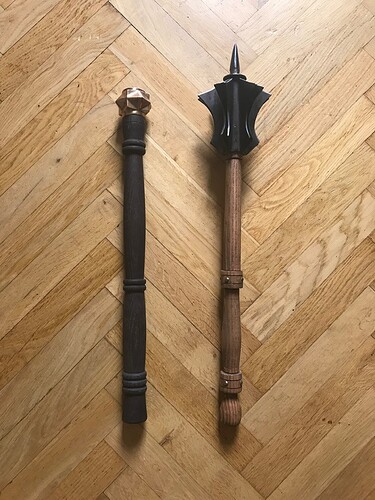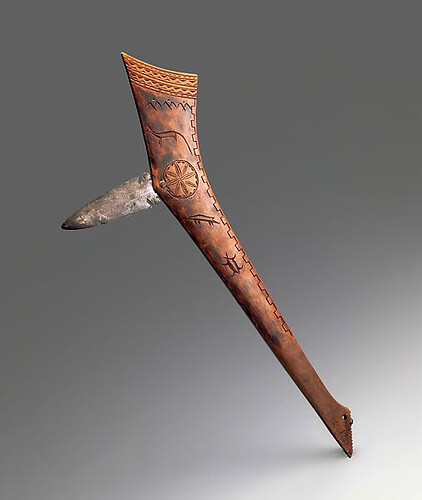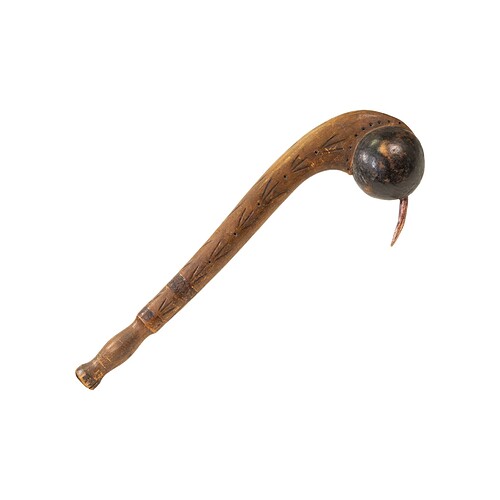The Lakota of today is very different than what DE had at launch and what the original game had.
I think a big problem is just how people play the game.
I think they have enough siege cause the stats of the clubs, the upgrade cards, the wall bonus, etc. Heck I rarely even use mortars cause I find them slow and annoying.
I prefer to just ram units into the base and wipe everything, and lakota is very good at doing that, better then basically every other civs at this point.
Most games I play never even reach industrial
So what is “proper siege” for lakota?
I frankly dont care that they dont have a lot of range siege options, they dont need it most of the time, atleast to me.
The reason as for why [Club Warriors] are anti-cavalry units has a lot to do with the “Rock Paper Scissors balance” that MetalKing1417 has pointed out. If they did not have multipliers against cavalry, the Lakota would be helpless against cavalry in the early game or when they have to counter masses of cavalry through population effective means. Both The [Bow Rider] and [Rifle Rider] takes up 2 population slots while the [Club Warrior] only occupies 1 population slot.
And besides that [Club Warriors] are not the only units in the game armed with a bludgeon that they use to counter cavalry with in the game. The Aztec [Jaguar Prowl Knight], Japanese [Yambushi] and the [Zapotec Lightning Warrior] are a few other examples of units that counters cavalry with clubs.
If the developers thought of a valid reason as to how a blunt instrument could be used as a anti-cavalry weapon, then I think it has to do with their ability to cripple or break limbs. When the [Club Warrior] attacks an enemy cavalry unit, then they are probably trying to cripple the horse so that the rider will fall off and where they can then deal a finishing blow to them.
Contrary to how they might appear, warclubs were not heavy like a mace - they were fairly lightweight and inflicted damage more like a policeman’s baton, although many had a spike driven into the head.
That really depends on design of the war club itself if they were heavy or not. The war club that I show in my post above is most likely very top heavy like a mace, as its center of gravity lies in the stone “hammerhead”. And not all maces are heavy, some maces are heavier to swing while others barely takes any effort to swing them.
I know this because I own two maces in real life. The one on the right with the flanged steel head is heavier to swing while the mace to the left with the bronze head is very lightweight.
A simple addition of edges or spikes to a blunt weapon can turn them into very lethal weapons that causes internal wounds. Blunt traumas are some serious injuries that can result in death. That is why warriors during the Medieval ages didn’t have to bother with penetrating the armour of a fully armoured enemy if they had a mace, because the force of the weapon could pass through it and destroy their inner body structure.
The same problem as with the rods, which were effective against to sneak between pikeman infantry formations.
The siege fix is not for supremacy, its for treaty, where melee siege is useless most times. Otherwise devs wouldnt add captured obus.
I opened this topic, (Why captured mortars cost 8 pop slots?) cause I dont get the point of the fix as lakota are the only ones with bonus vs walls
U do have the new card that reduces their coin and pop cost, which as it being completely unviable in supremacy, makes it works as a balance between treaty and supremacy, atleast to me.
Only for lakota, they have become mostly useless for the other 3 civs, going back to legacy times
Yeah but the other 3 civs arguably other options and I would kinda want to see those improved for treaty rather then just mortars.
Lakota lacking all other options makes sense to have the pop reduced ver
But why?? What was the issue to do that nerf?? How they were OP if natives are the less used??
The issue with other units is that need too much time to take down (great pieces of) walls
I think its more that they dont want it to be a single monolithic unit that diverts away from the core siege units of the civs
for walls I always found them to be micro intensive but sort of easy to deal with with that weird thing about spread damage on walls
The warclubs the Lakota used - ballhead and gunstock - were made of wood, and not weighed down with any heavier materials. They were not used to bludgeon people to death, they were used to disable and knock an opponent to the ground to make them submit or, if they would not, to shoot at point-blank range or end with a flinthead dagger.
Metal spikes were often driven into the heads of both clubs, but that was a later occurrence and, again, only served to make them more effective into humans. The heavier of the two - the ballhead - weighs no more than a policeman’s baton. It is made of gnarled root wood, not metals. It is not intended to be heavy.
i agree the war club as an anti-cavalry unit is pretty bad. The issue from a gameplay standpoint is that if they are an anti infantry unit they overlap with axe riders too much, or with bowmen, or both, depending on how the unit was implemented. As you said, if there’s not really any spearmen on foot, there’s no other unit that can fill the heavy infantry role. So the roster is kinda stuck with this awkward club unit as a heavy infantry
The warclubs the Lakota used - ballhead and gunstock - were made of wood, and not weighed down with any heavier materials. They were not used to bludgeon people to death, they were used to disable and knock an opponent to the ground to make them submit or, if they would not, to shoot at point-blank range or end with a flinthead dagger.
Metal spikes were often driven into the heads of both clubs, but that was a later occurrence and, again, only served to make them more effective into humans. The heavier of the two - the ballhead - weighs no more than a policeman’s baton. It is made of gnarled root wood, not metals. It is not intended to be heavy.
I think I picked your description about the War Club out of its intended context, as I read your text. When you previously wrote about the War Club you were specifically referring to the “Gunstock War Club” right?
I thought you were talking about War Clubs in general. I made a mistake on my part by misinterpreting what you conveyed. However, my point about that all Maces are not heavy still stands, as their weight varied depending on their design and some of them could weigh just as much as a War Club, more or less.
And speaking of Maces, in my native language “Mace” is called “Stridsklubba” in Swedish. And if we were to directly translate this word into English it would roughly be the same as “War Club”.
Gunstock and Ballhead war clubs were not heavy clubs. They operated more similarly to a policeman’s baton than a typical blunt weapon, like a hammer or mace.
The double-headed one that you posted originally is not one I’ve ever seen associated with my people.
This is a gunstock warclub as the Lakota would have built them.
This is a ballhead warclub as the Lakota would have built them.
Neither warclub is made to be heavy - the ballhead is made out of a single piece of gnarled root wood. The ball is painted a darker colour for aesthetic purposes. The spike driven into it could have been made of many materials, but was a newer addition from fighting with Europeans.
Neither of these warclubs would have been useful into cavalry. They’re too lightweight to do much to a horse, but both would have been excellent against human foes in melee.
AnaWinters could you please consider taking a look at this link? I think I might have found something that connects the Double-Headed War Club to the Lakota (Plains Indian Weapons, part 2: the Stone War Club).
It may not contain a lot of information in it, and maybe one should take it with a pinch of salt, but according to the author of this post who goes by the name “Ernest Gendron”, and is a Nakoda-Cree educator, this Double-Headed War Club or Stone War Club was used by the Nakoda who called it the: “i ŋ ya ŋ i ŋ játʾe” or “íŋ ya ŋpŝuŋpŝuŋ” in their native tongue.
And according to him he also points out that that this War Club was not only particularly associated with the Nakoda (Assiniboine) but also with the Lakota as well.
Ngl, this is the first I’ve ever read of the stone-head being attributed to the Lakota. The Nakoda, to be clear, are a completely different nation than the Lakota - they are no more our cousins than the Haudenosaunee are.
It’s entirely possible that the people who associate the “Lakota” with using the stone-head misidentified those they were looking at - I did find notes that the Cheyenne used them, and the Cheyenne were so closely tied with the Seven Fires that they could be mistaken for one without prior knowledge of the differences. It’s also possible that they were used by small sects of the northern Lakota, like the Siha Sapa or Oohenumpa, who strayed further north than, say, the Oglala or Hunkpapa (of which I am most familiar, having a mother from one and a father from the other).
But I’ve found no notes of the Oglala or Hunkpapa wielding them, and none of the elders I know (mostly my own grandparents, aunties, and uncles, of which there are many) recognized the stone-heads when I showed it to them.
Add: My auntie and her sons are particularly fond of recreating traditional weapons, and they’ve never seen the stone-head used by us. They have made a dozen or so gunstock, several lances, a few flint daggers, and they’re creating two different types of ballheads - a couple made of cannonballs (not accurate, they are aware, but my little cousin thought it’d be cool) and a couple made of gnarled root wood, as is traditional.
I see. If that is the case would it be “okay” if the Lakota were able to train an infantry unit wielding this weapon from the [War Hut], but make it clear that they are warriors from the Cheyenne tribe and not from the Lakota?
By doing this the Lakota civilisation will have some kind of a “Halberdier” unit who will replace the [Club Warrior] that counts as a [Pikeman] to the Lakota in-game.
I think that it is absolutely important to represent each civilisation in the game from their own culture, but if they happened to be allied with other people who helped them in their cause, such as the Cheyenne with the Lakota, wouldn’t it then also be important to represent that as well to some degree?
If we take a look at other civilisations in the game such as the [Swedes], they can train a cavalry unit called the [Hakkapelit] who are not Swedish but are [Finnish] soldiers who served Gustavus Adolphus during the Thirty Years’ War. And the [Russians] can train the [Cossack] who are apparently people of mixed ethnic origin, descending from Russians, Ukrainians, Belarusians, Turks, Tatars and others who settled or passed through the vast Steppe. The Russian government established an alliance with them were they served as their soldiers, by giving them their own land and property.
Edit: About your aunt and her sons recreating traditional weapons, just sounds extremely fascinating! And that they are creating two different types of Ball-Headed War Clubs also sounds interesting, where one is made out of cannonballs. Even if it may not be traditional, there is nothing wrong with giving an old design a new look, at least to me, for it is a way of praising history. I remember seeing a YouTube video where a guy casted a Ball-Headed War Club completely out of aluminum.
Since you have said something about yourself and your family, I have to repay that by telling something about myself. I may have been born and raised in Sweden but I also happen to have some roots to a Native American tribe known as the Mapuche. And when I find the time I really want to know more about them.
I’m not against the Lakota having Cheyenne soldiers, but if they do, they should be of the Cheyenne warrior societies, like the Dog, Shield, Kitfox, Elk, or Bowstring Soldiers.
Personally, I’m not against the Lakota just not having a melee anti-cavalry unit at all. I think it’d give them an interesting weakness, and an ironic one.
Consider this: The Lakota have four units that are super effective into heavy infantry - the Tokala Soldier, the Rifle Rider, the Cetan Bowman, and the Wakina Rifle. While most of the Lakota military is based around their cavalry, they do not lack a way to take down cavalry’s counters. It’d be more interesting if the Axe Rider was given a bonus into cavalry, making them weaker into cavalry but having other ways of mending that weakness.
Ah, I understand. I remember sending a request to Forgotten Empires last year where I suggested that the [Mustangs] card could reduce the population cost of both the [Axe Rider] and the [Rifle Rider] by 1. If the Lakota had a card that could reduce the population cost of the [Axe Rider] by 1 and weakening them some extent stats wise, then they could serve as a population effective anti-cavalry unit.
I also suggested that the [Tashunke Prowler] could function as a economy unit, where they would have an additional special ability where they could steal resources from enemy settlers and resource producing buildings. But maybe that would be too far-fetched for the Lakota.
How about also giving the Lakota the ability to send Arapaho warriors from the Home City?
From my understanding, the Arapaho tribe were also aligned with the Lakota, but they were closer allies to the Cheyenne. But they did participate in the “Battle of the Little Bighorn” or “Battle of the Greasy Grass”.
This warrior could be called Arapaho Spearman and their in-game description could be: “Powerful heavy infantry available only from the Home City”. They will be a much more stronger “Halberdier” variant than the [Mauler] unit that I suggested, but only a limited number of them can be sent.
I think you missed the point - the goal would be no pop-effective melee anti-cavalry units. Civs need weaknesses, and this was a historical one of the Lakota. We fought from horseback against cavalry and infantry and fought infantry on foot, but there was never a method to fight cavalry from foot.
Weaknesses are OK. The Lakota have more anti-heavy inf units than most civs and those are all super efficient at what they do. Their goal should be to have cavalry on the field first in order to prevent the enemy from building cavalry - but if they do, Axe, Bow, and Rifle Riders should all be capable of fighting cavalry to some extent, but the civ would lack an answer-all anti-cav unit, forcing them to focus enemy cavalry with the right cavalry units of their own.


